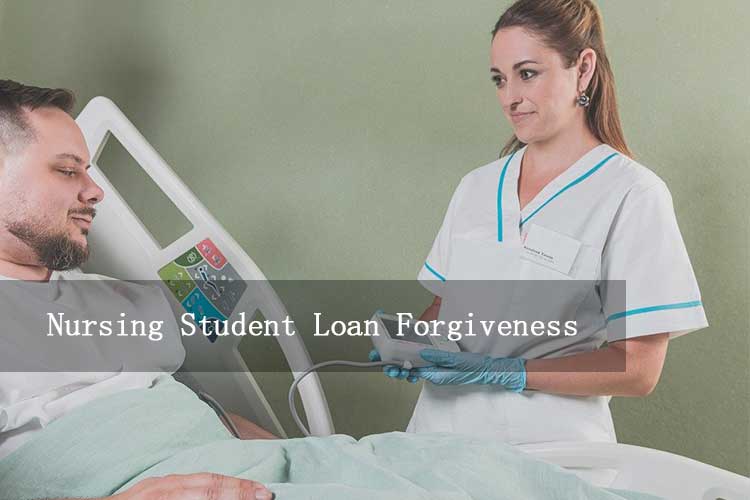
Nursing is an incredibly fulfilling and essential career, yet the expenses associated with nursing education can result in substantial student loan debt. Many nurses find it challenging to handle and repay this debt. Thankfully, there are various nursing student loan forgiveness programs that can help alleviate this financial strain. These initiatives are designed to lessen or completely wipe out the debt for nurses who commit to working in particular locations or underserved areas. In this detailed guide, we will delve into the various nursing student loan forgiveness options, the criteria for eligibility, and the application process.
What Is Nursing Student Loan Forgiveness?
Nursing student loan forgiveness includes initiatives that either lower or eliminate the outstanding student loan debt for eligible nurses. These initiatives are available through both federal and state programs, typically requiring nurses to serve in underserved communities or particular healthcare environments for a designated period. The aim is to motivate more nurses to work in high-need areas while also easing their financial stress.
Types of Nursing Student Loan Forgiveness Programs
There are several forgiveness programs specifically aimed at nurses. Below are the most common and beneficial options:
1. Public Service Loan Forgiveness (PSLF)
The Public Service Loan Forgiveness (PSLF) program is available to nurses who work full-time for a qualifying public service employer, such as a nonprofit hospital or government agency. After making 120 qualifying monthly payments (about 10 years), nurses may be eligible to have the remainder of their Direct Loans forgiven.
Eligibility Requirements:
- Must work full-time for a qualifying employer (nonprofit or government organization).
- Must be enrolled in a qualifying repayment plan, such as an income-driven repayment (IDR) plan.
- Must have made 120 on-time monthly payments.
Advantages:
- Forgiveness is tax-free.
- Available to nurses working in a wide range of public service settings.
How to Apply:
- Submit an Employment Certification Form (ECF) to track progress.
- After 120 payments, apply for forgiveness through the Department of Education.
2. NURSE Corps Loan Repayment Program
The NURSE Corps Loan Repayment Program offers nurses up to 85% of their unpaid nursing education debt in exchange for working at a critical shortage facility (CSF) in a high-need area. The program is aimed at nurses who are committed to serving in underserved communities.
Eligibility Requirements:
- Must be a licensed registered nurse (RN), nurse practitioner (NP), or nurse faculty.
- Must work full-time at a qualifying CSF or eligible nursing school.
- Must agree to a two-year service commitment.
Advantages:
- Can cover up to 60% of the loan balance in the first two years and an additional 25% in a third year.
- Encourages nurses to serve in areas with the greatest need for healthcare professionals.
How to Apply:
- Applications are typically accepted annually, and applicants must submit a detailed application package, including proof of employment and loan information.
3. State-Specific Nursing Loan Forgiveness Programs
Many states offer their own nursing student loan forgiveness or repayment assistance programs for nurses who agree to work in underserved or high-need areas within the state. Each state has different eligibility requirements, service commitments, and benefits.
Examples of State Programs:
- California State Loan Repayment Program (SLRP): Offers repayment assistance for nurses working in Health Professional Shortage Areas (HPSAs).
- Florida Nursing Student Loan Forgiveness Program (NSLFP): Provides up to $4,000 annually for nurses working in designated critical shortage facilities.
Advantages:
- State programs often target specific local needs, giving nurses an opportunity to serve closer to home.
- Some states offer additional incentives, such as housing assistance or relocation grants.
How to Apply:
- Contact your state’s Department of Health or Education to learn about specific program requirements and deadlines.
Eligibility for Nursing Student Loan Forgiveness Programs
While each loan forgiveness program has unique requirements, there are some common criteria that nurses must meet to qualify:
- Licensed Nurse: Most programs require that applicants be licensed RNs, NPs, or nurse faculty members.
- Employment in High-Need Areas: Many programs target nurses who work in underserved areas or at critical shortage facilities.
- Full-Time Employment: Many programs require full-time employment for a minimum period (typically 2-3 years).
- U.S. Citizenship: Some programs, like the NURSE Corps Loan Repayment Program, require U.S. citizenship or permanent residency.
- Repayment History: For programs like PSLF, nurses must have made on-time payments while enrolled in a qualifying repayment plan.
Steps to Apply for Nursing Student Loan Forgiveness
Applying for nursing student loan forgiveness can seem overwhelming, but following these steps can make the process smoother:
- Research Eligibility: Determine which program(s) you qualify for based on your job, location, and loan type.
- Gather Documentation: You’ll need to provide proof of employment, loan information, and possibly income details.
- Submit Applications on Time: Many programs have annual deadlines. Be sure to submit your application materials before the cut-off date.
- Stay Informed: Keep track of changes in federal or state policies that could affect your eligibility or program benefits.
Maximizing Loan Forgiveness Opportunities
While nursing student loan forgiveness programs can significantly reduce debt, there are additional strategies to consider for maximizing benefits:
- Enroll in Income-Driven Repayment Plans: If you’re pursuing PSLF, enrolling in an income-driven repayment plan can lower your monthly payments, making the forgiveness process more manageable.
- Make Extra Payments: If you can afford to, making extra payments on your loans will reduce the overall amount you owe, even if you qualify for partial forgiveness.
- Stay in Touch with Your Loan Servicer: Regularly check in with your loan servicer to ensure that all of your qualifying payments are being accurately counted and that your loans are properly categorized for forgiveness.
Alternative Repayment Strategies
If you’re unable to qualify for nursing student loan forgiveness, there are other options to consider, including:
- Refinancing: You may be able to refinance your student loans to secure a lower interest rate, which can save money over time.
- Income-Driven Repayment Plans: If you have federal student loans, enrolling in an IDR plan can cap your monthly payments based on your income and family size, making repayment more manageable.
Conclusion
Nursing student loan forgiveness offers a fantastic chance for nurses to lessen or completely wipe out their student loan debt while working in communities that are in dire need of healthcare workers. There are various options available, including federal initiatives like the Public Service Loan Forgiveness (PSLF) and the NURSE Corps, as well as state-specific programs, all designed to help alleviate the financial strain of nursing education. By familiarizing yourself with the eligibility criteria and following the necessary steps to apply, you can benefit from these forgiveness opportunities, enabling you to concentrate more on your nursing profession and worry less about your financial responsibilities.
Make sure to explore all available options and apply for any programs you’re eligible for, as loan forgiveness can significantly impact your financial future.



